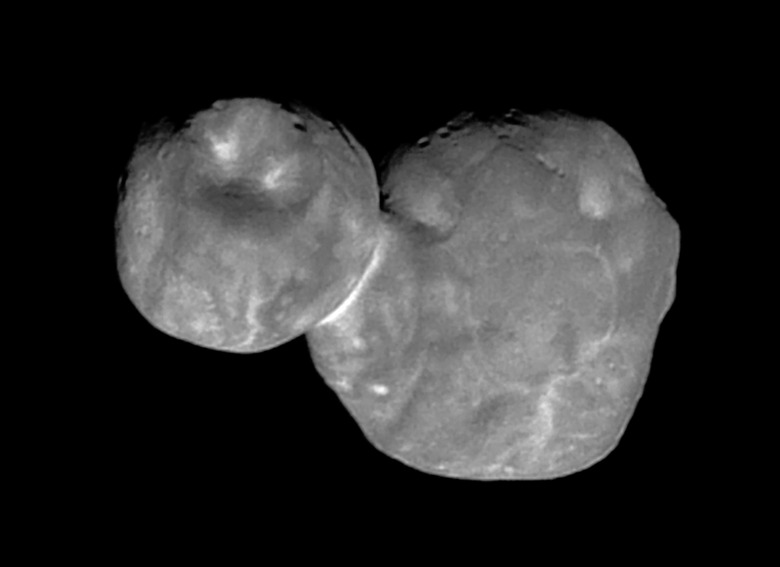NASA Was Forced To Rename An Asteroid Because Of Nazis
Earlier this year, NASA's New Horizons probe visited a very special space rock. It was a momentous occasion, especially since the rock turned out to be two distinct objects that drifted together over time, making it look like a sort of space snowman. At the time, the object was known as Ultima Thule, but it's since been renamed. The reason? Nazis.
The rock, which is now known as Arrokoth, had been nicknamed Ultima Thule in honor of an ancient legend of a land with the same name that was beyond the reach of mankind. It would have been a fitting name, but unfortunately for NASA, a bunch of really gross people had to ruin that name for everyone.
Soon after NASA began calling the rock by its quirky nickname, historians stepped in to remind them that the most recent usage of "Ultima Thule" was problematic. Decades earlier, far-right extremists in Germany adopted Ultima Thule as the name for the conceptual homeland of the Aryan race. They were, of course, nazis.
Needless to say, linking a far-away asteroid to hate mongers wasn't exactly what NASA had in mind, and the New Horizons team quickly took it upon themselves to come up with a new, more fitting name for the special rock. "Arrokoth" has Native American origins, and researchers worked closely with Native American scholars to ensure the name made sense.
"The name 'Arrokoth' reflects the inspiration of looking to the skies, and wondering about the stars and worlds beyond our own," NASA's Alan Stern, principal investigator of the New Horizons mission, explained. "That desire to learn is at the heart of the New Horizons mission, and we're honored to join with the Powhatan community and people of Maryland in this celebration of discovery."
The name has now been registered with the International Astronomical Union, which is the governing body responsible for keeping track of such things. As the first binary asteroid ever visited by a manmade spacecraft, it's quite special, and it's important that NASA got the name right.
